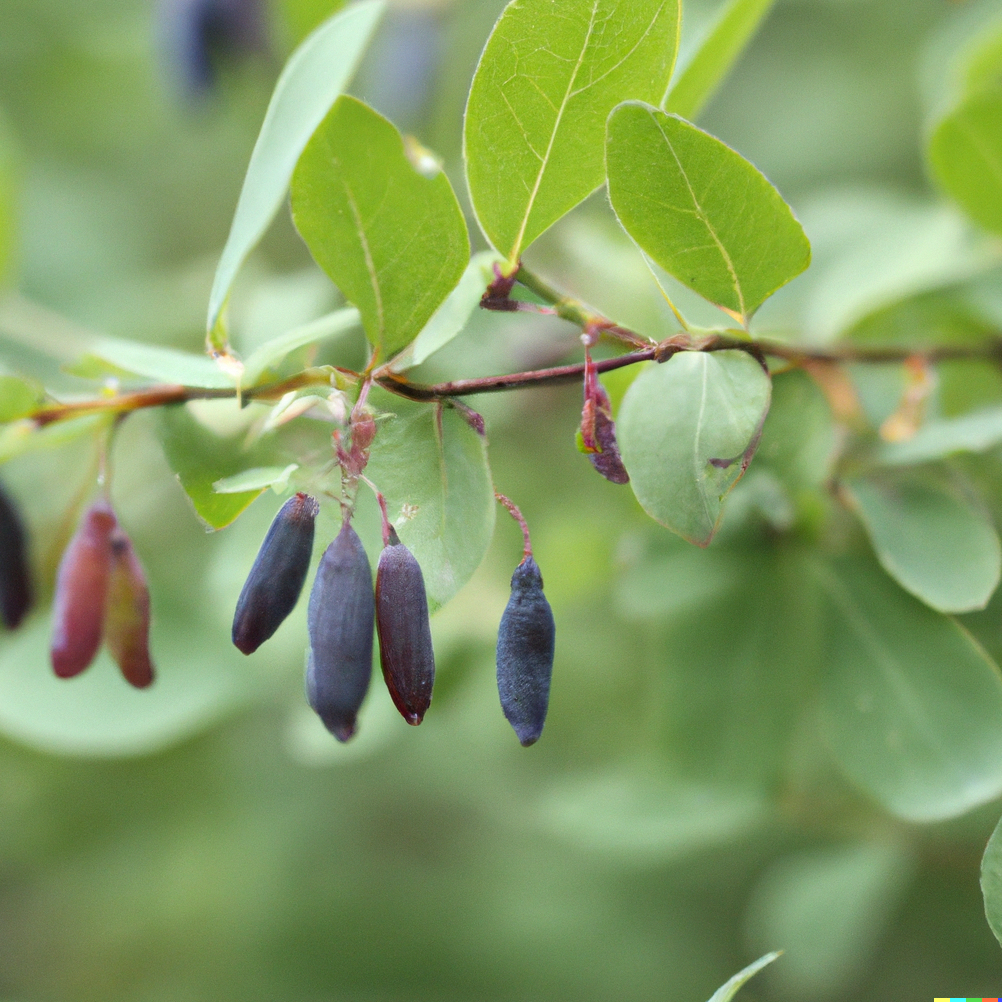The American Fig Company
Indigo Treat Honeyberry
Indigo Treat Honeyberry
Couldn't load pickup availability
Indigo Treat Honeyberry (Lonicera caerulea 'Indigo Treat') is a deciduous fruit-bearing shrub that is native to the cooler regions of the Northern Hemisphere. It is a member of the honeysuckle family and is also known as the "honeyberry" or "sweetberry honeysuckle".
The Indigo Treat Honeyberry plant grows up to 6 feet tall and 4 feet wide, with an upright habit and dense foliage. The leaves are oval-shaped, dark green in color, and approximately 2 inches in length. In early spring, the plant produces small, fragrant, white or pale pink flowers that are followed by clusters of edible fruit.
The fruit of the Indigo Treat Honeyberry plant is oval-shaped, blue-black in color, and approximately 1/2 inch in diameter. The fruit has a sweet, tangy flavor that is similar to blueberries but with a hint of honey. The fruit is high in antioxidants, vitamin C, and potassium, making it a healthy snack or addition to smoothies, desserts, and jams.
The Indigo Treat Honeyberry plant is self-pollinating and prefers full sun to partial shade. It is a hardy plant that can tolerate temperatures as low as -40°F and is resistant to most pests and diseases. It is easy to grow and requires minimal maintenance, making it a popular choice for home gardens and orchards.
In summary, the Indigo Treat Honeyberry plant is a beautiful and delicious fruit-bearing shrub that produces tasty and nutritious blue-black fruit. It is easy to grow, hardy, and resistant to pests and diseases, making it a great addition to any garden or orchard.
Latin Name: Lonicera caerulea
Site and Soil: Indigo Treat honeyberry plants prefer full sun to partial shade and well-drained soil that is rich in organic matter. They can tolerate a wide range of soil pH levels but prefer slightly acidic to neutral soils.
Pollination Requirements: Honeyberries require cross-pollination between two different cultivars to set fruit. Indigo Treat is partially self-fertile but will produce a higher yield when planted with another honeyberry cultivar.
Hardiness: Indigo Treat honeyberries are hardy to USDA zone 2 and can withstand winter temperatures as low as -40°F. However, they may experience winter damage if planted in areas with late spring frosts.
Bearing Age: Indigo Treat honeyberry plants typically start producing fruit 2-3 years after planting.
Size at Maturity: Mature plants can reach a height of 6-8 feet and a width of 4-6 feet. They can be pruned to maintain a smaller size.
Bloom Time: Indigo Treat honeyberry plants produce small, white, bell-shaped flowers in early spring.
Ripening Time: The fruit of Indigo Treat honeyberries ripen in late June to early July, depending on the location and growing conditions.
Yield: A mature Indigo Treat honeyberry plant can produce 8-10 pounds of fruit per season.
Pests & Diseases: Honeyberry plants are generally not bothered by pests or diseases but may be susceptible to aphids, mites, and powdery mildew. Proper sanitation and pest management practices can help prevent and control these issues.
USDA Zone: 2-7
Share

Featured Review
"Great! Great! Great! Great! Great!"
✰✰✰✰✰
- JARREN -
